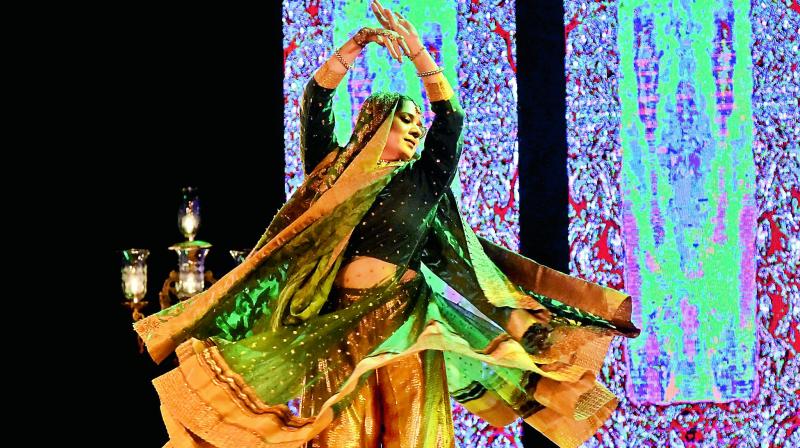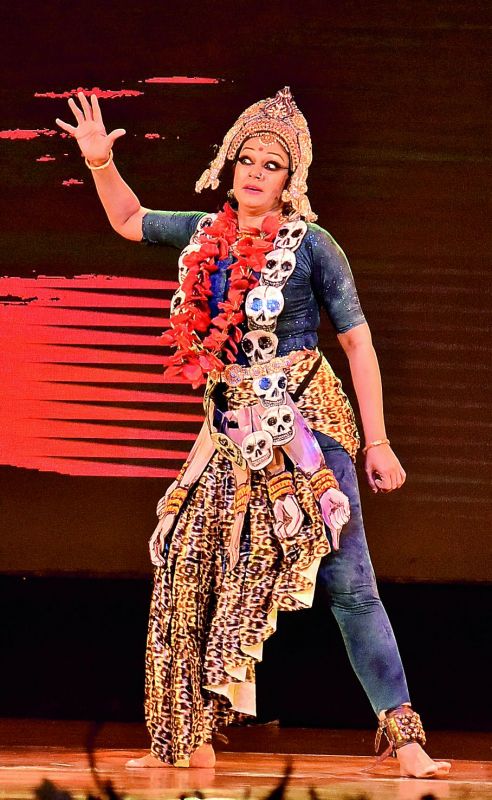Graceful narratives
While Shobana's recital took a spiritual trajectory, Manjari Chaturvedi called attention to the art form practised by the courtesans.

Two dancers who performed in the city recently highlighted the glory of dance with maturity, creativity and restraint. They revived memories of forgotten history through their narratives set to spellbinding music. The first dancer Shobana, actress and dancer from Chennai, performed ‘Trance’ — a collection of traditional dance stories from mythology. In one of the episodes, it was surprising to see a female dancer trying to bring in the energy and vigour of Lord Nataraja.
She then moved on to a story of Mary Magdalene, followed by an interesting contemporary number titled ‘Dancing Drums’. Shobana pulled out all the stops by playing the drums and getting into a Jugalbandi with the rhythm player Anantha R. Krishnan and Prudhvi on keyboard, and of dance footwork with the rhythms and music. To top it all, the audience was also included in one of the rhythmic pieces, along with all artistes.
The purpose of creating the whole production was to bring forth the thought that there may be different paths to the Almighty in all religions, but the purpose and goal were universal. It’s all about understanding the need to share and care for each other
— Shobana
 Shobana
Shobana
In the second half of the show, Manjari Chaturvedi from New Delhi dazzled with a performance titled ‘The Courtesan’, along with storytelling by Bollywood actress Neesha Singh. Manjari is a trained Kathak classical dancer and has been researching on the subject of ‘Nautch Girls’, who she feels didn’t get their due recognition for the art form that they pursued for years.
Says Manjari, “After all, 200 years ago, there were no air-conditioned halls for giving a performance. Programmes used to take place with the support of the royal patronage of rulers.”
“It is unfortunate that most of the male performers got their due recognition from the rulers and society. They were put on a high pedestal and adored as artistes while most women performers were put into the shadow of Tawaif or prostitutes. They were subjected to a lot of social stigma in spite of having learnt their Kathak dance in the traditional way from eminent teachers.”
Adding, “Even the dress styles of the courtesans have been changed in the movies. I restructured the dance forms by collecting old images and paintings as well as discussions with many people from pre-independence times. After all, I feel that these singers-cum-dancers also contributed to the creations of renowned poets like Mirza Ghalib by singing their poetry. It’s also very sad that most of these wonderful performers spent their last days with pecuniary troubles.”
Manjari feels that young performers of Kathak must go beyond the grammar learnt from their teachers. “It’s very important to have strong fundamentals of traditional dance. But my advice to the young performers is they must constantly research and search for every opportunity to tell a story through their performance. One needs to go beyond the traditional aspects of learning to develop creativity and evolve along with the art form,” advises Manjari.
HT02

